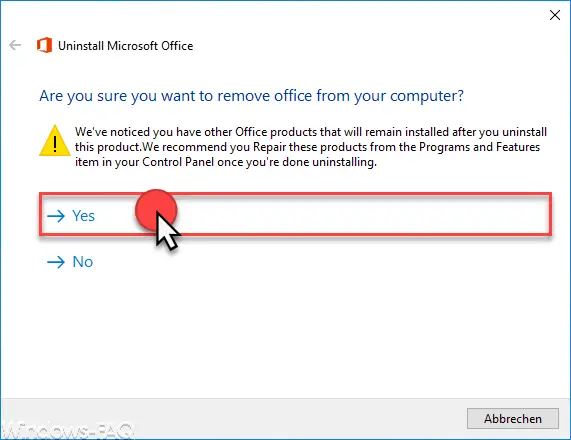

- #HOW TO REINSTALL MICROSOFT OFFICE 365 WITHOUT DISC INSTALL#
- #HOW TO REINSTALL MICROSOFT OFFICE 365 WITHOUT DISC 32 BIT#
- #HOW TO REINSTALL MICROSOFT OFFICE 365 WITHOUT DISC FULL#
- #HOW TO REINSTALL MICROSOFT OFFICE 365 WITHOUT DISC WINDOWS 10#
- #HOW TO REINSTALL MICROSOFT OFFICE 365 WITHOUT DISC SOFTWARE#
Try the best way that suits you the most for MS Office migration between two computers. With the help of this PC program mover, finding a license/product key is accessible. You don't need to redownload it again and again. No matter which Office version you used, EaseUS Todo PCTrans does well in program transferring speed.
#HOW TO REINSTALL MICROSOFT OFFICE 365 WITHOUT DISC SOFTWARE#
Professional PC transfer software - EaseUS Todo PCTrans could help.

Transfer Microsoft Office To Another Computer (All Versions)Īpplies to: Microsoft Office 2003/2007/2010/2013/2016/2019/365įor most MS Office users, the most concerning issue is whether the Office license could be moved to the new computer.
#HOW TO REINSTALL MICROSOFT OFFICE 365 WITHOUT DISC INSTALL#

#HOW TO REINSTALL MICROSOFT OFFICE 365 WITHOUT DISC FULL#
Full stepsĬheck the license type of MS Office > Uninstall MS Office from your old PC. Full stepsĭeactivate the Subscription on Your Old Computer > Install MS Office on the New Computer. \configuration.xml'.On the source PC, select "PC to PC" on the main screen of EaseUS Todo PCTrans and move on. Finally the setup process was started with the command 'setup /configure. To start the installation, I opened a DOS box as administrator and changed to 'D:/ODT. Save the script as 'configuration.xml' in the folder where you extracted the zip file.
#HOW TO REINSTALL MICROSOFT OFFICE 365 WITHOUT DISC 32 BIT#
I installed the 32 bit version –> SourcePath="I:\">.Next I installed Word, Excel, PowerPoint and Outlook with the following script: This didn't work at all and I was left with a second installation of MS Office.Īt second attemp I first removed both Office installations using the Control Panel. I had the complete MS Office 2016 Professional Plus suite installed on my laptop and tried to remove the unwanted components with a script.
#HOW TO REINSTALL MICROSOFT OFFICE 365 WITHOUT DISC WINDOWS 10#
It really does work with Windows 10 Home edition.įirst attempt failed. The command looks like this: setup.exe /configure configuration.xml Launch the setup.exe from the downloaded ODT archive. Once the configuration file contains all desired settings, you can start the ODT. Configuration example ^Ī sample configuration for installing from local media could look like this: The Microsoft Website has complete documentation for all supported settings. However, this only works under Windows 7 and 8.1 in Windows 10 it has no effect. With these, you can acknowledge the EULA automatically or specify which channel to use for future updates.Ī useful setting allows you to pin the Office applications to the taskbar. In addition to this core configuration, the ODT also supports several other options. Installation of Office 2019 is limited to the four core applications More options ^ Groove also covers OneDrive for Business, and Lync covers Skype for Business. Supported values for the applications are: For each program you would like to do without, you insert such an element and specify its name in the attribute ID, for example: Excluding certain Office applications ^Īnother child element of Product determines which applications not to install. This support document contains the full list of all product IDs the ODT accepts. Office 2019 supports the following strings, amongst others: Allowed values for Office 2016 and 365 are, for example: These do not describe the individual applications, but the stock-keeping units (SKUs) of Office using the ID attribute. If you have mounted the ISO file as a virtual DVD, you specify the root directory of the drive here (for example "D:\"): Īlternatively, you can copy the installation media to a share in the network and enter the universal naming convention (UNC) path.Īs a child node of Add, the configuration expects one or more Product elements. The attribute "SourcePath" points where to retrieve the installation files. Its attribute "OfficeClientEdition" (with values "32" or "64") determines whether to install the 32- or 64-bit version. Under "Configuration" an "Add" node is required. It is available in XML format and accepts a handful of elements to control the setup. One example configuration delivered with the Office Deployment Tool


 0 kommentar(er)
0 kommentar(er)
